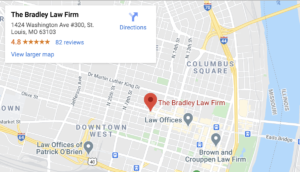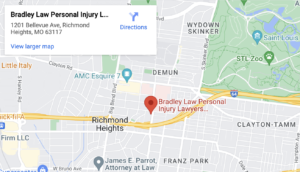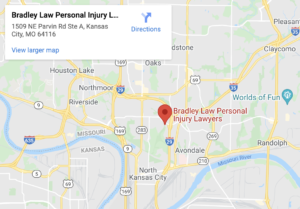
Back pain is one of the most common health problems in the U.S. Over 65 million Americans have experienced back pain recently, and over 16 million report chronic back pain that limits their daily activities.
You might require expensive treatment and therapy when you suffer a back injury in an accident. You might even miss time from work.
Learn about back injuries and the compensation you can pursue for a back injury that resulted from someone else’s actions.
Table of Contents
What Is the Anatomy of Your Back?
Your back extends from your shoulders to your hips. Although the spine also includes seven vertebrae in your neck, the cervical spine experiences different forces and injuries than the rest of your spine. Thus, doctors generally don’t consider the neck a part of your back.
The section of your spine that runs through your back includes 17 vertebrae. You have 12 vertebrae in your thoracic spine. These attach to 12 pairs of ribs that form your rib cage.
The lumbar spine sits below the thoracic spine and contains five vertebrae. These sit behind your abdomen and support the weight of your chest, arms, and head. The lumbar spine also transfers your body weight to your hips, allowing you to walk upright.
Each vertebra consists of a solid piece of bone known as the body and several bony protrusions called processes. The vertebral bodies align to form the spinal column, which provides structure to your back. But since the vertebrae segment the spine, the spinal column can bend and twist as you move your upper body.
The processes align to form the spinous process, a structure that appears as a bumpy ridge up the center of your back. The spinous process provides anchor points for the ligaments that hold your spine together.
You have several large muscle groups in your back. These muscles provide strength and mobility when you bend or turn your body. Your tendons work to anchor specific muscles to the spinous process, as well as to your pelvis, ribs, skull, and shoulder blades.
Between each pair of vertebrae sit small discs. The collagen that makes up these discs absorbs shocks as you move. It also gives the discs a tough, slick surface so your vertebrae can slide and turn smoothly.
What Causes Back Injuries?
Back injuries typically result from diseases, trauma, or overuse.
Overuse injuries usually affect people who experience back stress as part of their jobs. People with job duties that include standing, walking, lifting, or carrying develop microscopic cracks and tears in the structures of their backs. Over time, repetitive stress will cause these cracks and tears to grow.
Traumatic back injuries can happen in many ways. For example, blunt trauma can fracture bones and bruise the soft tissues of your back. Blunt trauma often results from high falls and slips and falls.
Penetrating trauma can cause bleeding and infection. Penetrating back trauma can happen in workplace accidents involving sharp objects that get propelled into the back.
Hyperextension can tear the soft tissues and damage the discs. One common cause of hyperextension injuries is car accidents, in which the spine often bends and twists during a collision.
In all of these cases, an injury can cause instability and weakness in your back. This, in turn, can cause back pain and limit your ability to support and move your body.
Worse yet, an injury can cause tissues in your back to become inflamed, dislocated, or deformed. When tissues in your back move out of place, they can press on the spinal cord and nerve roots that run through and near the spine. This pressure damages the nerves and produces nerve pain that can radiate throughout your body.
What Are Some Examples of a Back Injury?
Back injuries can affect many structures in the spine, producing conditions such as:
Fractured Vertebra
A broken back, more accurately called a fractured vertebra, is one of the most serious blunt injuries you can suffer. When you fracture a vertebra, bone fragments can enter the spinal canal. The vertebra can also dislocate after a fracture.
A dislocated vertebra or bone fragment can sever or compress the spinal cord. You could suffer at least partial paralysis if the spinal cord is severed.
Disc Injuries
When discs are compressed in an accident, they can become deformed. A herniated disc presents when compression forces cause the outer shell of the disc to separate, causing the interior gel to stick out. A bulging disc happens when forces cause the sides of a disc to sag and bulge.
In either case, you’ll suffer a permanent injury, as doctors cannot repair a damaged disc. A deformed disc can cause instability in your back and press on nearby nerve roots producing radiating nerve pain.
Strained Muscles or Tendons
Back strain happens when an accident tears or stretches your back muscles or tendons. Back strain can cause severe pain and may require months of rest and dedicated physical therapy to heal.
Symptoms of a back strain include:
- Back pain and stiffness
- Muscle inflammation
- Weakness
Back strain will usually heal with rest and over-the-counter anti-inflammatory drugs in four to six weeks. Doctors rarely recommend surgery for back strain but may recommend physical therapy.
Sprained Ligaments
You suffer a sprained back when you stretch or tear the ligaments holding your spine together.
Symptoms of a sprained back include:
- Pain, particularly when moving
- Joint swelling near the spine
- Back instability
- Pop in your back at the time of the injury
A sprained back will also heal with home care in four to six weeks. Unlike other types of sprains, doctors rarely operate on back sprains.
How Do You Recover Compensation for an Accident-Related Back Injury?
When you’re faced with a back injury in an accident, you can seek compensation for your injury from the at-fault party.
To recover compensation, you must prove that someone else failed to exercise reasonable care and that you suffered an injury as a result. If you’re able to prove negligence, you can recover compensation for both economic and non-economic losses.
You’ll likely experience temporary or permanent disability following a back injury. Your back is essential for sitting, standing, and walking comfortably. As a result, your back pain may significantly limit your activities.
Contact Bradley Law Personal Injury Lawyers to schedule a no-obligation initial consultation by calling (816) 408-3448. We’ll discuss the compensation you can pursue these and other effects of a back injury.




